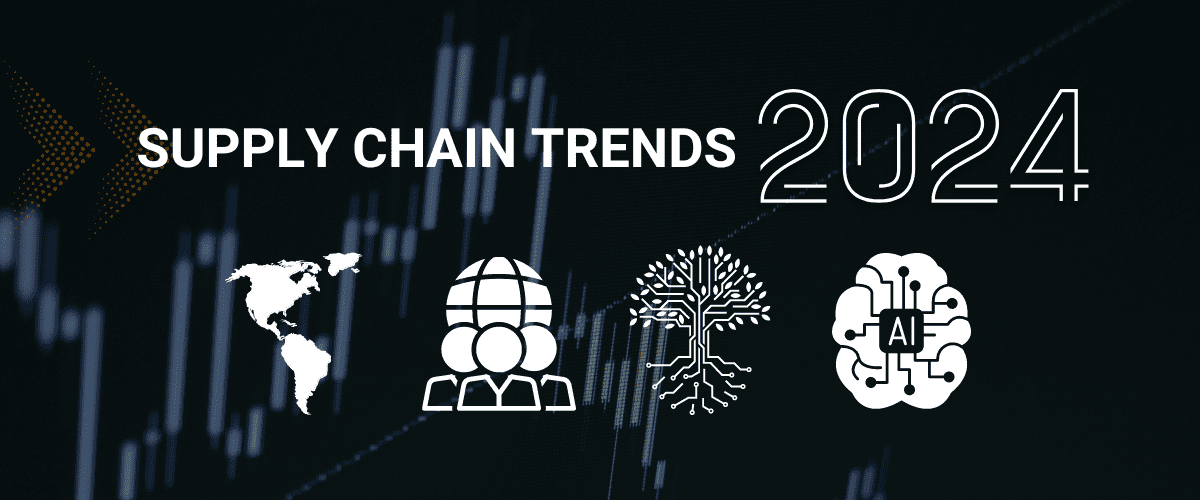Uncertain outlook for the logistics industry
As we exit a tumultuous 2023, where the logistics and shipping industry witnessed a reversal to normalcy and freight rates dropped from record highs to pre-pandemic levels, importers and freight forwarders are hoping that the new year will bring some much-needed stability in the freight market.
With the outlook for the maritime transportation industry clouded by uncertainty and volatility, 2024 is expected to be another difficult year for the industry.
Altered geo-political realities and a subdued macroeconomic environment will give rise to new challenges, compounded by stringent emission control regulations that will come into effect from January 2024 onwards.
To successfully navigate these challenges and ensure smoothly functioning supply chains, importers and freight forwarders will need to be aware of the trends expected to impact the transport and logistics sector, as well as keep abreast of the latest developments to respond to the changed operational dynamics effectively.
We will in this article explore the top trends that will influence the logistics industry in 2024, the implications thereof, and how importers and transporters can tackle them.
Top four trends to look out for in 2024
1. Nearshoring
As trade wars intensify and geo-political events complicate relations between major economies, American and European companies are increasingly exposed to risks arising from overdependence on certain locations for procurement and manufacturing.
The operational disruptions witnessed post-Covid compelled companies to diversify their sourcing locations and bring manufacturing capacity closer home, to reduce the geographical distance between their production base and consumer base. The rationale was that the shorter the distance, the more control the company had over its supply chain, and consequently the lesser the probability of transport-related disruptions hampering operations.
This reallocation of production capabilities closer home is called Nearshoring and has gathered pace in the last few years.
For American importers, Mexico is the viable alternative, helping it emerge as America’s largest trading partner.
European companies have nearshored to countries in Eastern Europe and the Mediterranean region.
2. Diversification to improve resilience
After being buffeted by diverse disruptive factors in the post-Covid era, companies have made concerted efforts to imbue their supply chains with resiliency, to better withstand the aftershocks of global events.
An important strategy in this endeavor is the diversification of sourcing origins and foraying into new markets.
In their quest to create alternate manufacturing bases comparable to China, Western corporations are investing in other Asian countries, such as India, Vietnam, and Thailand.
However, given how deeply China is intertwined in global supply chains and given the sheer scale of its infrastructure, it will remain a major sourcing location, while the other options under evaluation will be hampered by inadequate manufacturing scale and lack of world-class ancillary infrastructure.
This implies that most Western corporations will operate two (or more) supply chains, increasing the intricacies of supply chain planning.
The geographical expansion of supply chains across the globe will broaden the regulatory landscape that companies are subject to, as they will need to comply with the applicable laws of all the jurisdictions where they operate.
With the inherent complexity of the task of adherence to relevant regulations being magnified, companies will be constrained to expend considerable resources to understand their statutory obligations, track revisions thereto, and ensure continuous compliance therewith.
Another aspect of diversification is extending the network of service providers within locations, to reduce dependence on one vendor. For importers, this would entail working with multiple brokers, to mitigate risks and have a contingency plan in case any one broker’s operations are disrupted due to cyberattacks or other reasons.
Ergo, entering new markets will create both opportunities and threats.
3. Environmental regulations
As apprehensions grow about the carbon footprint of the shipping industry, governments worldwide have introduced a raft of legislation aimed at reducing emissions generated by the shipping industry.
With shipping emissions rising almost 5% in 2021, stiff targets are being set for decarbonizing the industry.
These include the introduction of the EEXI (Energy Efficiency Existing Ship Index) which came into effect in 2023 and the EU’s Emission Trading Scheme (ETS) which will come into effect in 2024.
The impact of these green regulations will be felt by other players in the transport chain (such as freight forwarders), as well as their customers (importers and exporters).
The cost of regulatory compliances is significant, with just the ETS estimated to cost the industry an aggregate of USD 3.6 billion in 2024, which most carriers and transport vendors will pass on to their customers.
Considering the nature and intent of environmental regulations, these costs are unavoidable; however, with better supply chain planning, route optimization, and streamlining of logistics processes, importers and forwarders can minimize them.
4. Utilizing logtech solutions
To effectively tackle these logistical challenges, importers and forwarders are leveraging technology, to optimize their supply chains. With technology as an adjunct to supply chain planning, transport, and inventory management is to a great extent simplified.
Logtech solutions can be used to automate the end-to-end supply chain or specific elements thereof. The diverse range of logtech solutions is designed to cater to all aspects of the transport process, ranging from customs clearance, intelligent document processing, drayage planning, and real-time visibility.
By incorporating the use of technology in their logistics operations, importers and freight forwarders can make optimal choices regarding consignment sizes, route selection, reducing lead times, and minimizing detention and demurrage.
Therefore, more logistics companies are considering investing in logtech, with a McKinsey survey finding that 87% of shippers have maintained or grown their technology investments since 2020, and 93% plan to maintain or increase their spending over the next three years.
Another key consideration is the fact that many new solutions are not complete in themselves, so companies need to use multiple systems and service providers. In this scenario, the key is the ability to integrate these diverse solutions seamlessly and without impacting existing systems. Should one system malfunction, businesses are exposed to the risk of the impact cascading down to other systems. Companies therefore need to have a network of network approach, backups for information and simple integration between new providers and existing legacy systems.
5. Continued disruptions
The resilience of global supply chains is facing an ongoing challenge due to unforeseen events such as issues in the Panama Canal, disruptions in the Suez Canal, and security threats in the Red Sea. While these events are beyond our control, they highlight the importance of having robust backup plans in place.
Importers and freight forwarders must proactively address potential obstacles. Diversifying sourcing locations and establishing contingency plans are crucial steps.
Identify alternative routes, transportation modes, and suppliers to maintain operational continuity, even in the face of unforeseen challenges.
Leverage logtech solutions to enhance visibility and streamline processes. Automated systems for customs clearance, real-time visibility, and intelligent document processing can significantly contribute to efficient supply chain management. By doing so, businesses can mitigate the impact of unforeseen disruptions, ensuring the smooth flow of goods.

